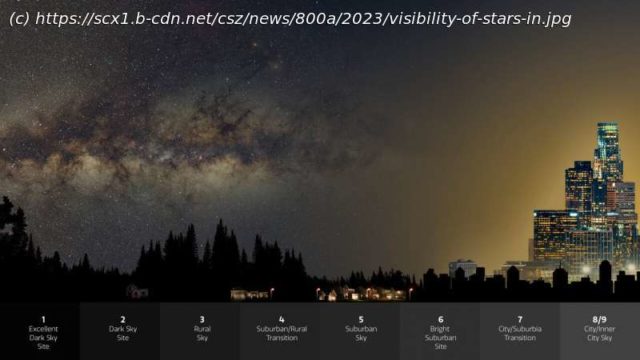People around the world are seeing fewer and fewer stars in the night sky. The change in star visibility can be explained by an increase in the sky brightness of 7–10% per year. The rate of change is faster than satellite measurements of artificial light emissions on Earth would at first suggest.
People around the world are seeing fewer and fewer stars in the night sky. The change in star visibility can be explained by an increase in the sky brightness of 7–10% per year. The rate of change is faster than satellite measurements of artificial light emissions on Earth would at first suggest.
This is the finding of a study published in the journal Science, conducted by a research group led by Christopher Kyba of the GFZ German Research Center for Geosciences and the Ruhr-Universität Bochum with colleagues from the GFZ and the U.S. National Science Foundation’s NOIRLab.
They analyzed more than 50,000 naked-eye observations by citizen scientists around the world from 2011 to 2022 as part of the « Globe at Night » Citizen Science Project. The results show that citizen science data are an important supplement to previous measurement methods.
Over a large part of the Earth’s land surface, the sky continues to glow with an artificial twilight long after sunset. This « skyglow » is a form of light pollution that has serious effects on the environment and should therefore be the focus of research, as Constance Walker, co-author of the study and head of the Globe at Night project of NSF’s NOIRLab since its inception, emphasizes.
After all, many behaviors and physiological processes of living creatures are determined by daily and seasonal cycles—and thus influenced by light. « Skyglow affects both diurnal and nocturnal animals and also destroys an important part of our cultural heritage, » says Walker. The appearance of the night sky is changing, with negative effects on stargazing and astronomy.
Credit: NOIRLab
The change in skyglow over time has not previously been measured globally. While it could in principle be measured by satellites, the only current sensors that monitor the entire Earth do not have sufficient accuracy or sensitivity.
A promising approach is therefore to use the observational power of people using the human eye as a sensor, and in doing so—within the framework of Citizen Science experiments—to rely on the power of the crowd. The « Globe at Night » project, initiated by the U.






